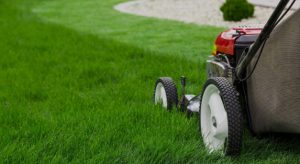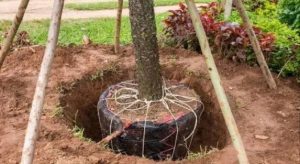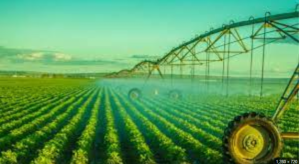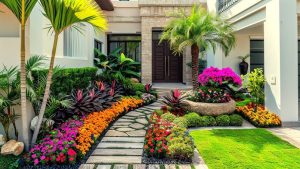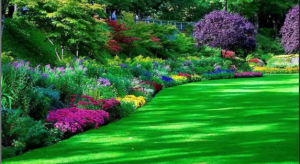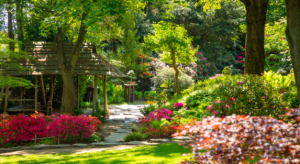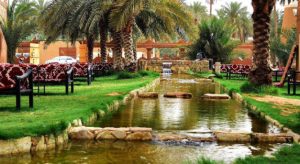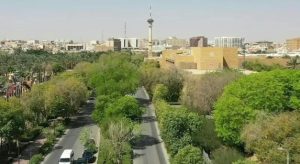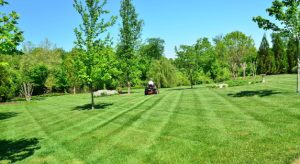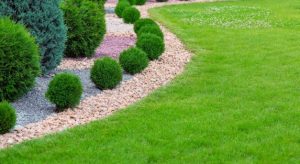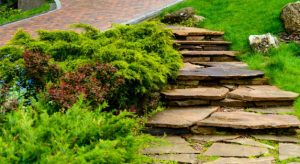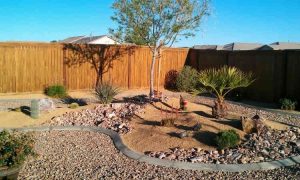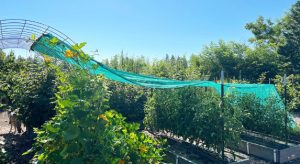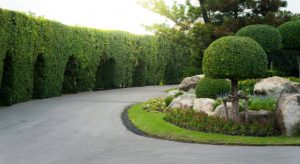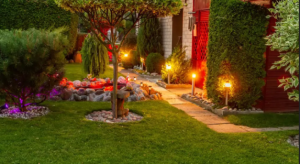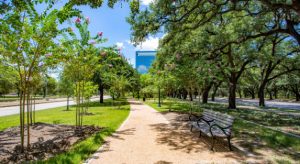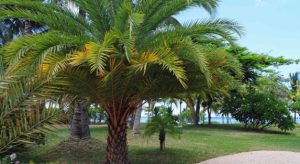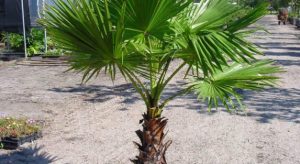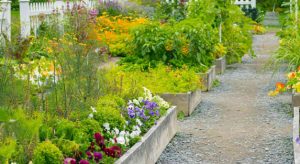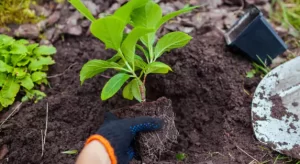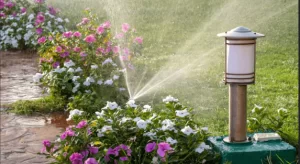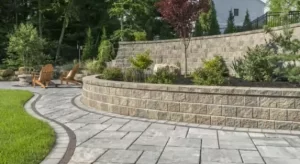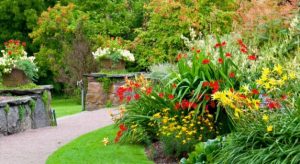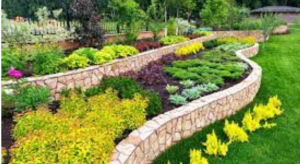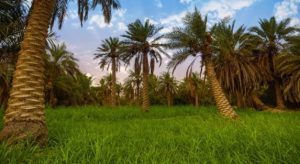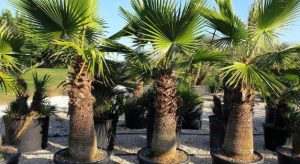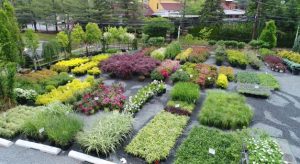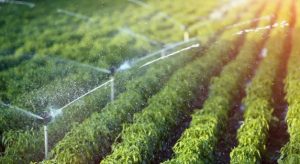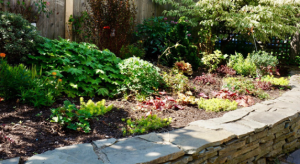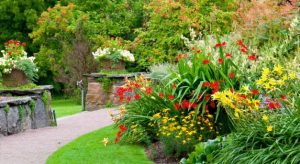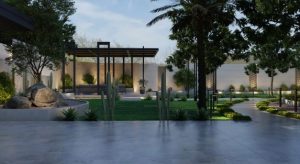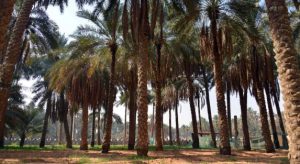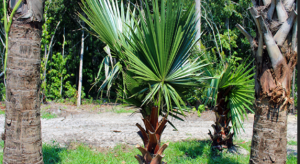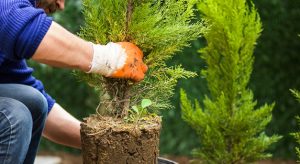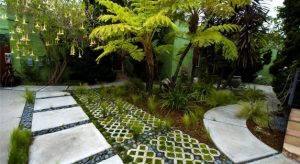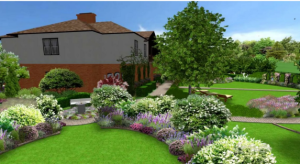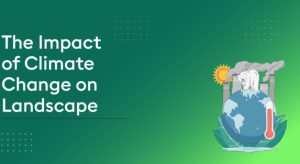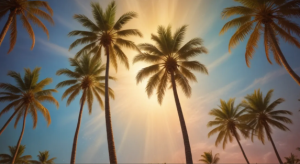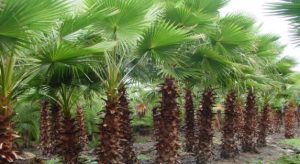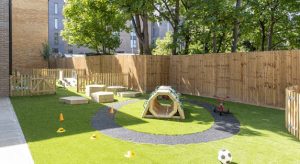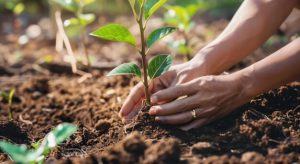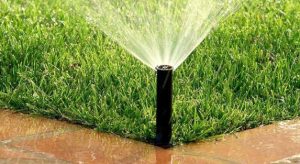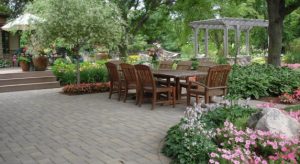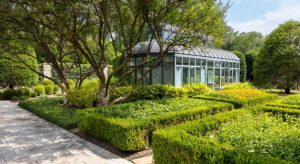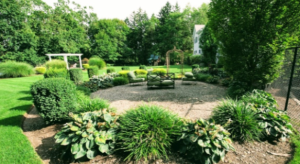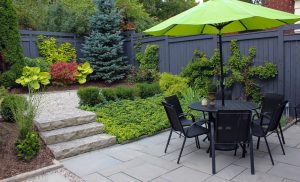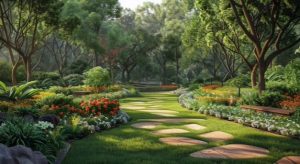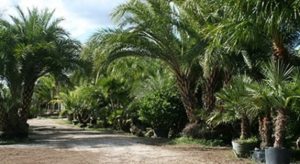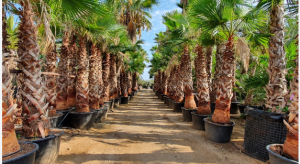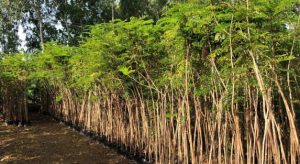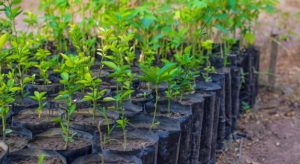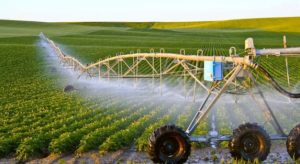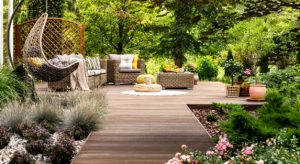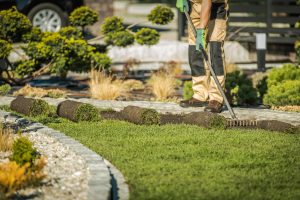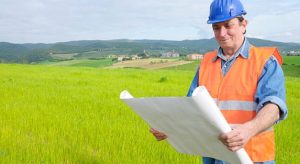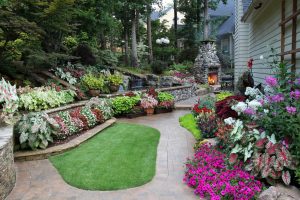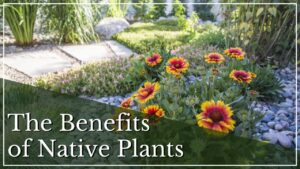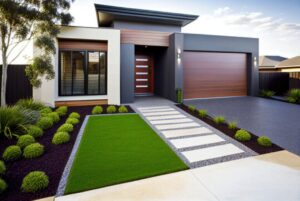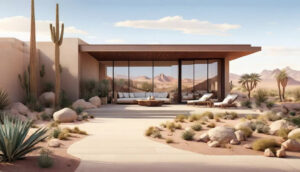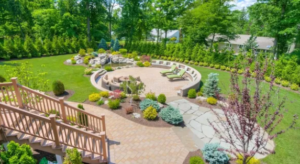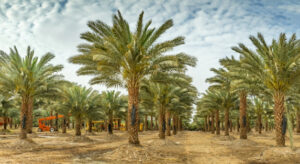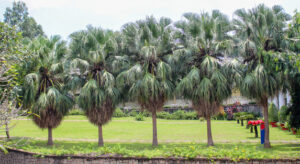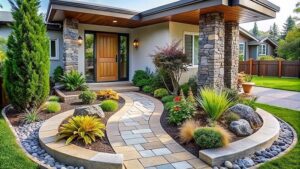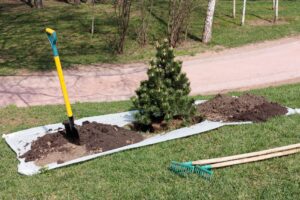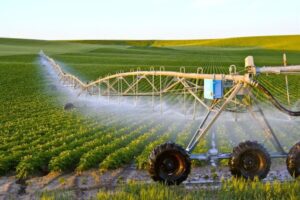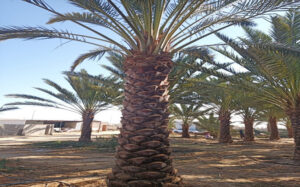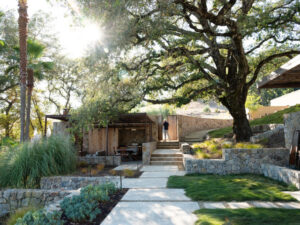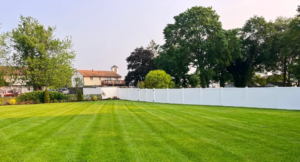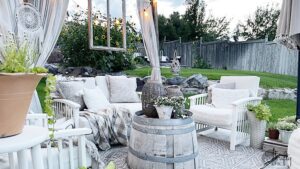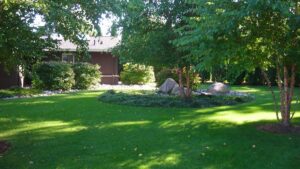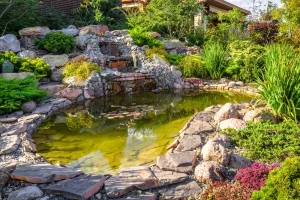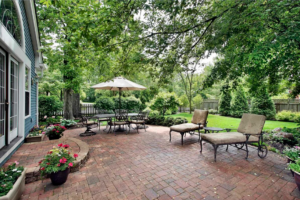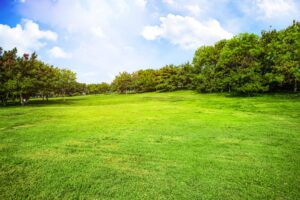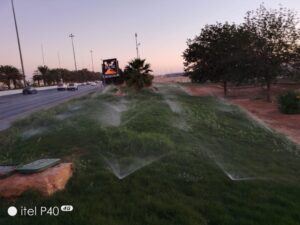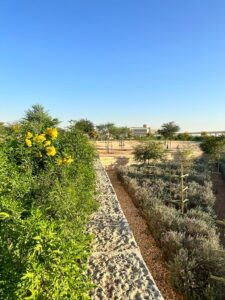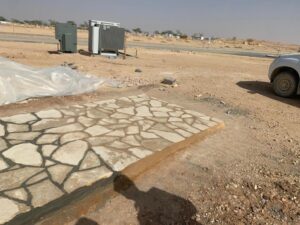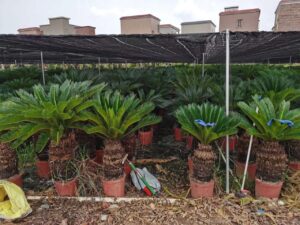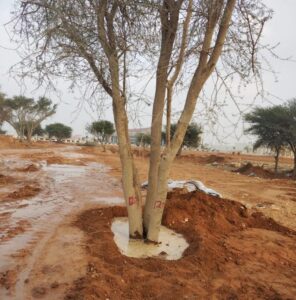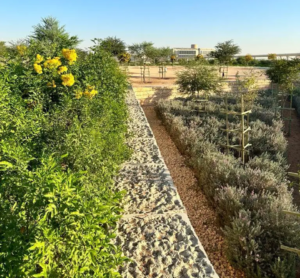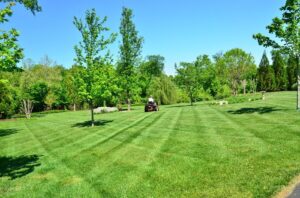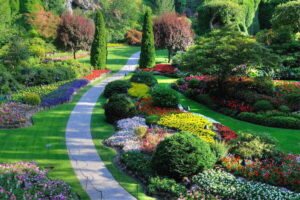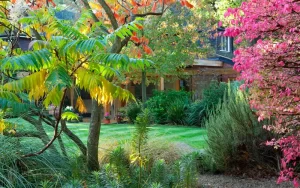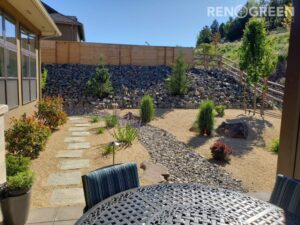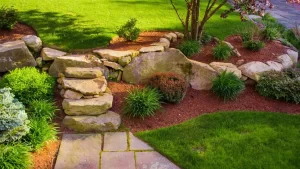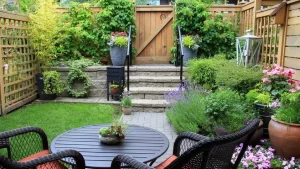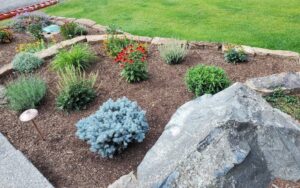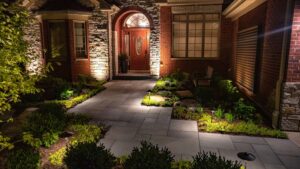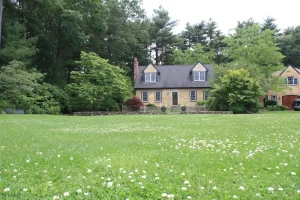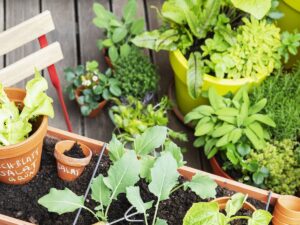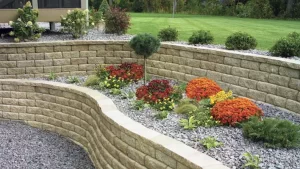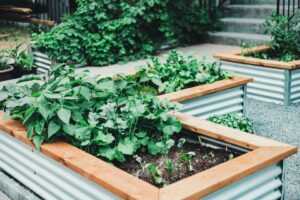Exploring the Beauty of Softscape Landscaping Design
31 January, 2025
Introduction
Softscape Landscaping Design in Saudi Arabia is an art form that transforms outdoor spaces into lush, functional, and sustainable environments. This approach focuses on living, horticultural elements such as plants, trees, shrubs, and flowers to enhance the beauty of landscapes. In Saudi Arabia, softscape landscaping presents unique challenges and opportunities due to the region’s arid climate, cultural preferences, and available natural resources.
Thoughtful plant selection, efficient irrigation techniques, and climate-adaptive designs are essential for creating thriving green spaces. Whether in residential gardens, commercial properties, or public parks, Softscape Landscaping Design in Saudi Arabia plays a crucial role in balancing aesthetics with sustainability. By incorporating native and drought-resistant plants, landscapers can craft vibrant, eco-friendly environments that flourish despite the harsh weather conditions. This article explores the intricacies of Softscape Landscaping Design in Saudi Arabia, offering insights into best practices, innovative techniques, and the future of green landscaping in the region.
Understanding Softscape Landscaping Design
What is Softscape Landscaping?
Softscape landscaping refers to the use of living elements in landscape design, including plants, trees, shrubs, flowers, and grass. Unlike hardscape elements, which include non-living features like stones, pathways, and walls, softscape components are dynamic and evolve over time. Softscape landscaping design aims to create harmonious, aesthetically pleasing, and ecologically balanced outdoor spaces.
Key Components of Softscape Landscaping
Plants and Trees: The backbone of any softscape design, plants and trees provide structure, shade, and visual interest. They can be selected based on their aesthetic appeal, growth habits, and environmental benefits.
Shrubs and Hedges: These elements are used to create borders, privacy screens, and focal points. They add texture and depth to the landscape.
Flowers and Groundcovers: Flowers bring color and vibrancy to the landscape, while groundcovers help prevent soil erosion and suppress weeds.
Lawns and Turf: Grass areas provide open spaces for recreation and relaxation. They also contribute to the overall greenery and aesthetic appeal of the landscape.
Soil and Mulch: Healthy soil is essential for plant growth, while mulch helps retain moisture, regulate soil temperature, and suppress weeds.
The Importance of Softscape Landscaping Design
Aesthetic Appeal
Softscape landscaping design enhances the visual appeal of outdoor spaces. The use of diverse plant species, colors, and textures creates a dynamic and inviting environment. Well-designed softscapes can transform mundane spaces into lush, vibrant gardens that captivate the senses.
Environmental Benefits
Softscape elements contribute to environmental sustainability. Plants and trees improve air quality by absorbing carbon dioxide and releasing oxygen. They also provide habitat for wildlife, reduce soil erosion, and mitigate the urban heat island effect. In regions like Saudi Arabia, where water scarcity is a concern, selecting drought-tolerant plants can promote water conservation.
Psychological and Social Benefits
Green spaces have been shown to have positive effects on mental health and well-being. Softscape landscaping design creates tranquil environments that reduce stress and promote relaxation. Additionally, well-designed landscapes can serve as social hubs, encouraging community interaction and outdoor activities.
Softscape Landscaping Design in Saudi Arabia: Challenges and Opportunities
Climate Considerations
Saudi Arabia's climate is characterized by extreme heat, arid conditions, and limited rainfall. These factors pose significant challenges for softscape landscaping design. However, they also present opportunities for innovation and creativity. Selecting drought-tolerant and heat-resistant plant species is crucial for creating sustainable and resilient landscapes.
Water Conservation
Water scarcity is a critical issue in Saudi Arabia. Softscape landscaping design must prioritize water-efficient practices, such as drip irrigation, xeriscaping, and the use of native plants. These strategies help minimize water consumption while maintaining the beauty and functionality of the landscape.
Cultural and Aesthetic Preferences
Saudi Arabia's rich cultural heritage and aesthetic preferences influence softscape landscaping design. Traditional Islamic gardens, with their emphasis on symmetry, water features, and lush greenery, serve as inspiration for contemporary designs. Incorporating cultural elements into softscape design creates spaces that resonate with local values and traditions.
Urbanization and Green Spaces
Rapid urbanization in Saudi Arabia has led to increased demand for green spaces. Softscape landscaping design plays a vital role in creating urban oases that provide respite from the concrete jungle. Parks, gardens, and green rooftops contribute to the overall quality of life in urban areas.
Principles of Softscape Landscaping Design
Balance and Harmony
Achieving balance and harmony is a fundamental principle of softscape landscaping design. This involves the careful arrangement of plants and other elements to create a cohesive and visually pleasing composition. Balance can be achieved through symmetry or asymmetry, depending on the desired effect.
Proportion and Scale
Proportion and scale refer to the size relationship between different elements in the landscape. Proper proportion ensures that plants and features are appropriately sized for the space, creating a sense of unity and coherence. Scale considerations are particularly important in large landscapes, where oversized elements can overwhelm the space.
Color and Texture
Color and texture are essential components of softscape design. The strategic use of color can create focal points, evoke emotions, and enhance the overall aesthetic appeal. Texture, on the other hand, adds depth and interest to the landscape. Combining plants with varying leaf shapes, sizes, and textures creates a dynamic and visually engaging environment.
Seasonal Interest
Softscape landscaping design should consider seasonal changes to ensure year-round beauty. Selecting plants that bloom at different times of the year, or those with evergreen foliage, can create a landscape that remains attractive throughout the seasons. In Saudi Arabia, where seasonal variations are less pronounced, incorporating plants with different growth cycles and textures can achieve a similar effect.
Sustainability and Ecology
Sustainability is a key consideration in modern softscape landscaping design. This involves selecting native and drought-tolerant plants, using organic fertilizers, and implementing water-efficient irrigation systems. Ecological considerations, such as creating habitats for local wildlife and promoting biodiversity, are also important for creating environmentally responsible landscapes.
Steps to Designing a Softscape Landscape
Step 1: Site Analysis
The first step in softscape landscaping design is conducting a thorough site analysis. This involves assessing the site's topography, soil conditions, climate, and existing vegetation. Understanding these factors helps determine the best plant selections and design strategies for the site.
Step 2: Defining Objectives and Goals
Clearly defining the objectives and goals of the landscape design is essential. Consider the intended use of the space, the desired aesthetic, and any specific functional requirements. For example, a residential garden may prioritize privacy and relaxation, while a public park may focus on recreation and community engagement.
Step 3: Developing a Concept Plan
The concept plan is a preliminary design that outlines the overall layout and arrangement of softscape elements. This includes the placement of plants, trees, shrubs, and other features. The concept plan should reflect the site analysis and align with the defined objectives and goals.
Step 4: Selecting Plant Species
Selecting the right plant species is crucial for the success of the softscape design. Consider factors such as climate suitability, water requirements, growth habits, and maintenance needs. In Saudi Arabia, native and drought-tolerant plants are ideal choices for creating sustainable landscapes.
Step 5: Creating a Planting Plan
The planting plan provides detailed information on the placement and spacing of plants. It includes specifications for each plant species, such as size, quantity, and planting depth. The planting plan ensures that the design is implemented accurately and that plants have adequate space to grow.
Step 6: Implementing the Design
The implementation phase involves preparing the site, installing plants, and establishing irrigation systems. Proper soil preparation, including amending the soil with organic matter, is essential for plant health. Careful planting and watering practices help ensure successful establishment.
Step 7: Maintenance and Care
Ongoing maintenance is critical for the long-term success of the softscape landscape. This includes regular watering, pruning, fertilizing, and pest control. In Saudi Arabia, where extreme heat and water scarcity are concerns, efficient irrigation and drought-tolerant plant selections are particularly important.
Future Trends in Softscape Landscaping Design
Smart Landscaping
The integration of technology into softscape landscaping design is an emerging trend. Smart landscaping involves the use of sensors, automated irrigation systems, and data analytics to optimize water usage, monitor plant health, and enhance maintenance efficiency. In Saudi Arabia, where water conservation is critical, smart landscaping offers significant potential for creating sustainable landscapes.
Vertical Gardens and Green Walls
Vertical gardens and green walls are gaining popularity as innovative solutions for urban landscaping. These features allow for the incorporation of greenery in limited spaces, such as building facades and interior walls. Vertical gardens improve air quality, reduce heat, and enhance the aesthetic appeal of urban environments. In Saudi Arabia, vertical gardens can provide much-needed greenery in densely populated cities.
Biophilic Design
Biophilic design is an approach that seeks to connect people with nature through the incorporation of natural elements into the built environment. Softscape landscaping design plays a central role in biophilic design, creating spaces that promote well-being and environmental sustainability. In Saudi Arabia, biophilic design can enhance the quality of life in urban areas by providing access to green spaces and natural elements.
Sustainable Practices
Sustainability will continue to be a driving force in softscape landscaping design. This includes the use of native and drought-tolerant plants, organic fertilizers, and water-efficient irrigation systems. Sustainable practices also involve promoting biodiversity, reducing waste, and minimizing the environmental impact of landscaping activities. In Saudi Arabia, sustainable softscape design is essential for addressing water scarcity and environmental challenges.
Conclusion
Softscape landscaping design is a powerful tool for creating beautiful, functional, and sustainable outdoor spaces. In Saudi Arabia, where the climate and environmental conditions present unique challenges, softscape design offers opportunities for innovation and creativity. By prioritizing water conservation, selecting appropriate plant species, and incorporating cultural and aesthetic elements, softscape landscaping design can transform the landscape of Saudi Arabia.
The beauty of softscape landscaping lies in its ability to harmonize with nature, enhance the environment, and improve the quality of life. As we continue to explore and embrace the principles of softscape design, we can create landscapes that are not only visually stunning but also ecologically responsible and culturally resonant. The keyword "Softscape Landscaping Design in Saudi Arabia" encapsulates the essence of this journey, highlighting the importance of thoughtful, sustainable, and innovative design in shaping the future of landscaping in the region.
- Fountain and Waterfalls
- Gardening
- hardscape
- Irrigation system
- Landscape
- Lawn
- Nursery
- Palm Tree
- Plantation and Maintenance
- softscape
- Tree Transplanting
- Washingtonian Tree
Categories
Latest Post
- Fountain and Waterfalls
- Gardening
- hardscape
- Irrigation system
- Landscape
- Lawn
- Nursery
- Palm Tree
- Plantation and Maintenance
- softscape
- Tree Transplanting
- Washingtonian Tree





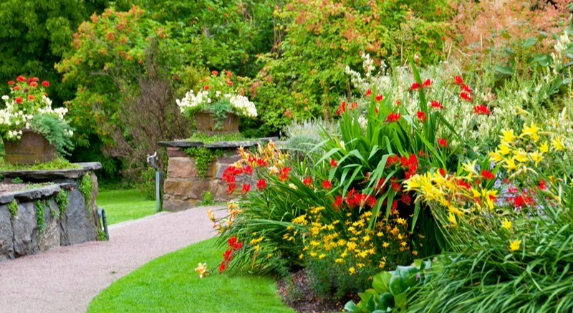
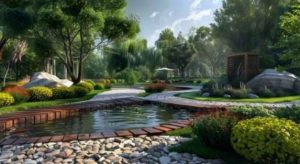
 .
.